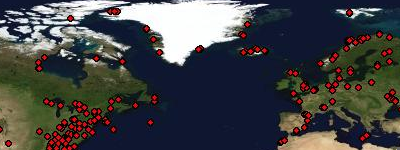Yesterday night I strolled over to the newthinking store in Mitte to attended the
Webmontag, a platform for networking and presentations of web applications. Three applications and a Web2.0 map that were presented might be of interest to the usual suspects here. Besides, I want to bookmark them anyway.
DeepaMeetha is a ... hmm ... tool for the creation of topic maps and ontologies, similar to mind maps. The interface is quite unusual though usable and integrates web sites (and a browsing element), email and other information sources. While I can't see an immediate application for me, the concepts and the design of the software is definitely worth checking out.
Tim Pritlove presented
Pentabarf, an open source web application to organize conferences. It was used in the planning of the recent
22C3 with 3000 participants over four days with four parallel tracks and several other larger conferences. It worked smoothly and seems ideally suited for conferences, workshops or summer schools in academic environments.
If you want to play buzzword bingo2.0, this illustration of the
Web2.0 mind cloud map, presented by kosmar, its creator is ideal. You could also make use of it to
explain what Web2.0 is about. I admit that the explanations around the mind mind somewhat shifted my personal views of Web2.0 from overly hyped buzz to actual progress on concepts on how to use the web.
One example of how these technologies could be put in place was provided by
Plazes.com, a fresh Berlin start up that provides an application for geo-localization by computer networks. The developers presented the site in a rather low tone, open to suggestions and rather critical, even though it smelt a little like the old New Economy. I've already signed up of course.
These three hours, two hours longer than planned, standing in a crowd of smoking people were three hours well spent. Some
pictures can be found on Netzpolitik.org.


